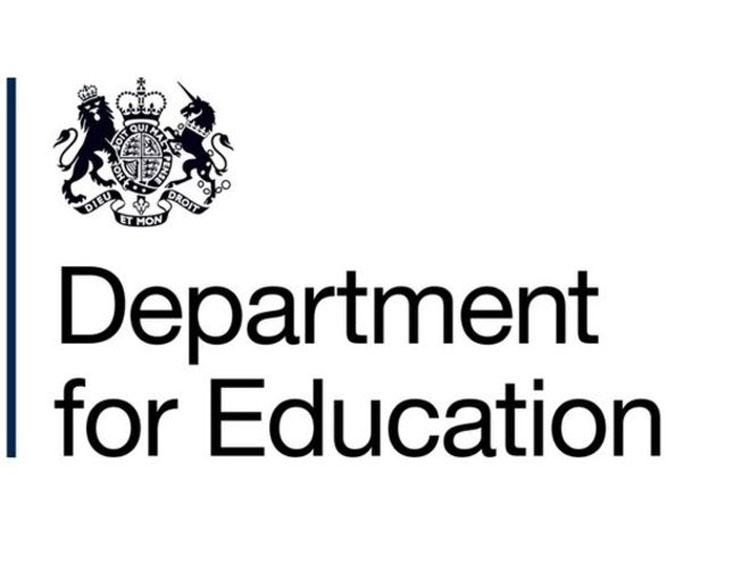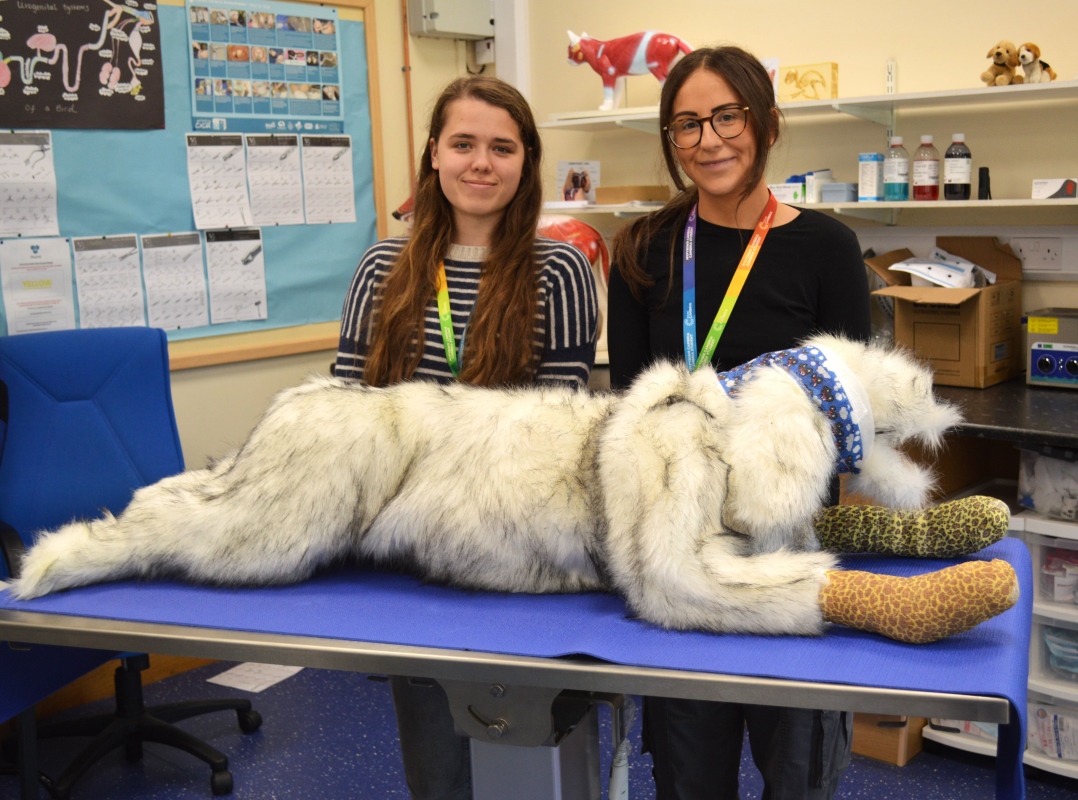Early years initial teacher training: 2021 to 2022 funding guidance

Funding guidance for early years initial teacher training (EYITT) providers for 2021 to 2022.
Overview
The Department for Education (DfE) allocates and funds early years initial teacher training (EYITT) places each academic year. EYITT leads to the award of Early Years Teacher Status (EYTS).
We provide training bursaries and training grants to attract high-quality graduates to become early years teachers.
You can only use this funding to offer training programmes that help trainees to meet the teachers’ standards (early years). The training grant includes the costs of assessment to meet these standards.
Trainees and potential applicants should visit the Get Into Teaching website and our list of EYITT training providers for more information. Employers should visit EYITT: a guide for employers.
Training routes
We offer funding for 2 out of the 4 EYITT training routes.
Graduate entry route
This is for graduates studying full-time. Training is typically over a 1 year period.
EYITT providers will receive training grant funding of £7,000 to cover course fees.
Trainees with high academic achievement may be eligible to receive a training bursary. This will be paid to the you to forward to your trainees.
Graduate employment-based route
This is for graduates:
- in paid employment
- in an early years setting
- who need training and further experience to demonstrate the teachers’ standards (early years)
- who have the right to work in the UK for the duration of the training
£14,000 is available for this route, made up of a:
- £7,000 training grant for providers
- £7,000 employer incentive for the trainee’s employer
Undergraduate entry
Funding is not available for this route. Trainees should contact Student Finance England to see if they can receive a tuition fee or maintenance loan.
This route is for undergraduates who want to take a level 6 degree in an early childhood-related subject along with EYTS.
This route is full-time and takes 3 or 4 years.
Assessment only
This is a self-funded route for graduates who:
- are very experienced at working with children from birth to 5 years old
- can demonstrate the teachers’ standards (early years) without any further training
This could be an early years teacher who:
- practiced overseas
- understands the early years foundation stage
Training bursaries
Training bursaries are only available to trainees registered on the graduate entry route. You should use the trainee’s highest qualification to determine how much they’ll get, for example:
-
Tier 1, £5,000: first-class honours degree, doctoral degree
-
Tier 2, £4,000: 2.1 honours degree, master’s degree
-
Tier 3, £2,000: 2.2 honours degree, aegrotat (unclassified) honours degree
-
No bursary: third-class honours degree, ordinary degree, aegrotat ordinary degree, no first degree
Medical first degrees
First degrees in medicine, which are qualifying awards in professional terms, are not classified. Although usually entitled ‘bachelor’, they are at level 7 (master’s level) on the FHEQ. However, this only applies to degrees that are 5 years in length.
You may consider 5-year degrees in medicine, dentistry, veterinary science and surgery as equivalent to a 2:1 degree for the award of a bursary. A first or distinction in an integrated master’s medical degree can be considered equivalent to a first class degree for the purpose of awarding a bursary.
There are also medical bachelor’s degrees which may be awarded as exit awards to students who satisfy the criteria specified but fail to meet the criteria for progression to the fourth or fifth year of the qualifying medical degree.
These qualifications are often called Bachelor’s of Medical Science (B Med Sci). You can consider these degrees as equivalent to a 2:2 degree for the purpose of awarding a bursary.
A number of award titles may be used in both categories of award. We advise you to check individual cases with the relevant awarding bodies before making a decision about awarding bursaries.
Professional and vocational qualifications
Providers will need to make sure that those responsible for decisions on entry understand, or have access to, advice on the range of professional and vocational qualifications generally regarded as equivalent to a first (bachelor’s) degree at 2:2 or above.
It is for you to decide whether a candidate’s qualification meets this criterion, and whether it demonstrates the breadth and type of academic engagement that would be expected from first degree study. Partnerships that do not include degree-awarding bodies may wish to seek advice from those that are.
Qualifications record keeping
You must keep accurate records of trainees’ qualifications and how they obtained them.
You should record:
-
names of all trainees granted a bursary
-
details of how you assessed the trainees’ qualifications
We may ask to see these records at any time. You should keep copies of:
- original trainee documentation or qualification certificates
- correspondence between you and trainees
- other documentation relating to the decision process
Eligibility
To receive a training bursary, trainees must:
- meet the entry requirements
- take a qualifying postgraduate Graduate Entry course
- hold a UK first degree with at least second-class honours (or equivalent)
- meet the terms and conditions of the bursary scheme
- not already hold EYTS or Early Years Professional Status (EYPS)
- not do any type of paid-teaching work which contributes to their training whilst undertaking a Graduate Entry course, for which the provider received early years funding
- not be registered on another EYITT course
You must also:
- notify trainees in writing that they’re eligible
- ensure that trainees continue to meet the criteria throughout the course
Training Bursary payments
You should pay bursaries in 10 monthly instalments.
| Bursary award | Monthly instalment |
|---|---|
| £5,000 | £500 |
| £4,000 | £400 |
| £2000 | £200 |
Payment eligibility
Trainees will be entitled to receive the first bursary payment if they’re actively engaged on the EYITT programme on the first day of the month following their start date.
ExampleA trainee commencing their course in September 2021 will be entitled to their first payment if they are on the programme on 1 October. They’ll be entitled to the second payment if they are on the programme on 1 November respectively. This is regardless of the provider’s individual payment date.
Payments for part-time or modular courses
Trainees on part-time or modular courses may agree a flexible monthly payment plan, which covers the duration of the part-time programme in order to avoid financial hardship for the trainee. However, you must make sure that the bursary payments reflect the proportion of the course that the trainee has completed at any point.
As part-time courses will span more than one academic year, you may award the bursary beyond the academic year 2021 to 2022. You are reminded that any bursary payments made after 31 July of the academic year will be included as expenditure for the following academic year.
Training Grant
You must use the training grant funding to meet all training costs for each trainee.
You must not:
- charge any additional fees
- switch allocated funding to other trainees
Full-time equivalence (FTE)
We calculate funding using the FTE principle:
| FTE equivalence | Trainee status |
|---|---|
| 0.5 or less | part-time |
| 0.6 or more | full-time |
Employer Incentive
The employer incentive is forwarded to the trainee’s employer. It’s a contribution towards costs that employers incur, such as:
- supply cover
- salary enhancements
- employment costs
- National Insurance
- additional training costs and other overheads
You cannot use the employer incentive for:
- sick pay
- maternity or paternity pay
- costs not related to training such as buying equipment or internal training
- costs that have occurred outside of their training period
If there any claims for Employer Incentive which are not covered by the above, please contact ITT[email protected] for further advice.
Types of company
The trainee must be an employee of the early years business. Sole traders and business partners are not eligible for an employer incentive as they’re classed as self-employed by HM Revenue and Customs (HMRC).
If the early years business is a limited company, the owners and those working for the company are not classed as self-employed and can be eligible for an employer incentive.
Withdrawals and deferrals
A withdrawal is when a trainee who has started a course informs their provider they no longer wish to continue. A deferral is when a trainee who has started a course agrees with their provider for their course to be paused temporarily and confirms that they intend to return.
If a trainee withdraws or defers, you must stop any further payments and update your records immediately on the trainee teacher portal.
You can keep some funding if a trainee withdraws or defers. The amount retained should be proportional to how long the trainee attended the course before leaving.
Graduate employment based EYITT providers can keep 1/12th of the total training grant and employer incentive funding for each month or part month the trainee remained in training.
Example(Graduate Employment Based)
If a trainee is employed from September 2021 and leaves in March 2022, you can retain 7/12th of the Training Grant and Employer Incentive funding.Graduate Entry trainees who withdraw or defer from a course will be entitled to be paid the training bursary for each month up to, and including, the month in which they formally withdraw. EYITT providers can also retain 1/10th of the total training grant for each month or part month the trainee remained in training.
Example (Graduate Entry)
If a trainee starts their programme in September 2021 and withdraws or defers in January 2022, they’ll be entitled to 4 payments in total as they were active on the course on:
- 1 October 2021
- 1 November 2021
- 1 December 2021
- 1 January 2022
You can also retain 4/10th of the Training Grant funding.
In the event that a Graduate Entry trainee is absent through sickness, you may only make one further bursary payment following the first day of absence. You may also retain an additional 1/10th of the Training Grant.
For Graduate Employment Based trainees, you may retain an additional 1/12th of the Training Grant and Employer Incentive in this instance.
After this, the absence should be treated as a period of deferral and payments must stop with immediate effect.
Overpayments
We’ll recover any overpayments if a trainee withdraws or defers and will not reimburse you for any payments you make in error. Any overpayments made to trainees or employers will then be an internal matter between you and the trainee or employer.
Returning trainees
Returning trainees who defer and then rejoin their original course, or take any advanced standing or credit to a new EYITT course, will only be eligible to receive the remaining EYITT funding (training grant or bursary) up to the value which was available in the year they started their original course. A bespoke payment schedule may be agreed for the remaining amount between you and the trainee.
Where the length of the course is increased, the bursary and training grant instalments can be amended to reflect the longer timeframe. The total amounts, however, are fixed and cannot be increased.
If a trainee leaves one EYITT course and joins a new one with no transfer of standing or credit from their previous course, this is viewed as a separate route to EYTS. They’ll be entitled to receive a new bursary and training grant, subject to the eligibility criteria and rates set in this guidance.
If the trainee received their full bursary or training grant entitlement during a previous EYITT programme, this may impact their eligibility to receive further EYITT funding while completing a new programme. Please contact the Funding Team at ITT[email protected] for further advice.
How you’ll receive your funding
You’ll be sent a remittance advice from the Department for Education (DfE) when you’ve been paid, and you can use the trainee teacher portal to review your payment profile.
You’ll be paid in:
- 11 monthly BACS instalments from September to July
- 7 working days from the 1st day of the month
You’ll be paid different amounts until we have collected all your data, as set out in this table.
| Month | Rate |
|---|---|
| September to November 2021 | Provisional rate based upon a proportion of your allocation |
| December 2021 to July 2022 | Actual rate based upon the trainee data you submit to DfE |
We’ll recover any overpayments by sending you an invoice or deducting any future payments.
Data management
Grant funding agreement terms and conditions are included in the grant offer letter we send to you.
You must share data about trainee applications, recruitment and employment outcomes with us if we request it.
We may contact you or visit your premises if we need to clarify any potential discrepancies, especially in relation to unclassified degrees.
Trainee data
Submit your EYITT trainee data using the portal.
This is a condition of your funding. We’ll use this data to calculate how much funding you’ll get.
You must register all trainees with us by October 2021 and complete a validation declaration.
You must also submit the:
- names of all your EYITT trainees
- training courses you provide
- outcomes of the training
You must update records on the trainee teacher portal if a trainee:
- withdraws
- changes their status
- defers
Financial monitoring
You must only use your funding as set out in this guidance.
If you do not comply with the terms and conditions, we may withdraw your accreditation and funding.
You must hold full records of all payments made to employers of trainees who get the employer incentive. This information can be audited by us at anytime.
Assurance
You’ll be asked to complete an Annex G in accordance with published guidance, containing income, expenditure and trainee data. This has to be independently audited and countersigned by the Accounting Officer and chair of governors or an appropriate board.
More information about Annex G will be available after the academic year. Before this, we may request an interim return so we know what likely expenditure will be.
We’ll use Annex G for to reconcile your funding with your declared expenditure.
This also takes in to account the effect of trainees who have withdrawn or deferred so we can recover any funding you did not spend.
Non-compliance
We may withdraw accreditation if you do not fully comply with funding guidance. This includes:
- data collection
- monitoring and assurance requirements
Early Years ITT funding cycle
Key dates in the bursary funding cycle
June to July 2021
EYITT providers in their first year of delivery will be contacted in order to submit grant funding agreements (GFAs) to us. If other documents, such as letters of variation are required, we will contact individual ITT providers separately.
August 2021
A proportion of your allocation is incorporated into the funding model, based upon overall recruitment. This allows us to make interim payments to you from September to November 2021.
September to November 2021
The first 3 payments will be made if you have a GFA in place. Payment profiles are available in the DTTP during this period.
November 2021
Your DTTP data is incorporated into the funding model to confirm payments from December 2021.
This is based on:
-
your trainee registration returns, submitted through the DTTP, along the Graduate Entry and Graduate Employment Based routes
-
returns submitted on or before the census closure date
December 2021 to January 2022
These payments will be made if you have a GFA in place, based on your DTTP data.
The DTTP is available for you to see funding summaries and payment profiles.
February to April 2022
Your DTTP data will be updated in the training bursary model in February 2022 to include any changes that you have submitted, through the DTTP in January 2022, since the census was published.
These payments will be made (if you have a GFA in place) based on your DTTP data. Any subsequent changes to your DTTP data will be considered on a case-by-case basis.
The DTTP is available for you to see your funding summaries and payment profiles.
May to July 2022
Your DTTP data will be updated in the training bursary model in May 2022 to include any changes that you have submitted, through the DTTP, in April 2022.
These payments will be made (if you have a GFA in place) based on your DTTP data. Any subsequent changes to your DTTP data will be considered on a case-by-case basis.
The DTTP is available for you to see your funding summaries and payment profiles.
Assurance and audit cycle
Key events in the bursary funding cycle
June to July 2022
We’ll send indicative Annex G documents to you in July 2022.
These should be returned by 31 July 2022.
September to December 2022
We’ll send final Annex G documents to you at the end of the academic year. We’ll pre-populate this with the amount of funding you have received, and the trainees that funding includes.
The completed document, and Auditor report, will help you to provide us with the necessary assurance for both the amount received and the purpose for which it was used. Further guidance on this process will be sent to you at the same time.
These should be returned by 31 December 2022.
January to March 2023
In addition to the audited document and Auditor report, we also apply a sampling process to gain assurance of the Early Years ITT funding expenditure. This involves assurance checks through the collection of evidence on sampled trainees, including withdrawals, course information, degree class and payment information.
Recoveries and reimbursements will be completed through:
- the payment profile
- other method, such as invoice
Published 3 November 2020 Contents











Responses